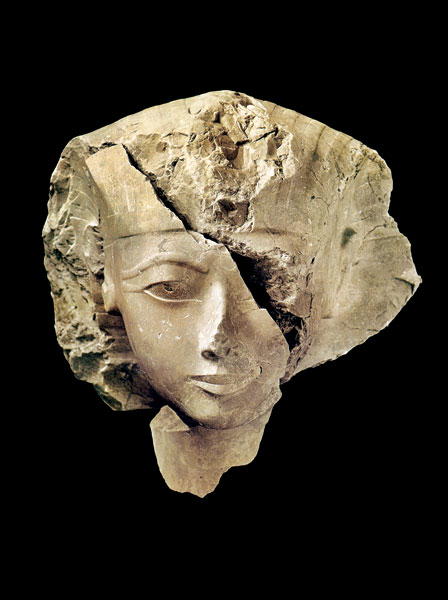Image Details

With her strong symmetrical features and her clear gaze fixed slightly above the viewer, Pharaoh Hatshepsut (1479–1458 B.C.) seems depicted as a god. This head—part of a life-size, seated statue of Hatshepsut—was found in 1928 by the Metropolitan Museum of Art’s expedition to Deir el-Bahri, on the west bank of the Nile at Thebes, where the queen built her breath-taking funerary temple.
The daughter of the 18th-Dynasty pharaoh Thutmose I, Hatshepsut married her half-brother, the pharaoh Thutmose II, and served as his principal wife. Upon Thutmose II’s death in 1479 B.C., she became the regent of Pharaoh Thutmose III, the son of her husband by another wife. Then, in the young king’s seventh regnal year, around 1473 B.C., Hatshepsut took a step that modern historians still have difficulty explaining—she declared herself co-regent with Thutmose III, and she served as the senior and much more powerful partner of this dual kingship for the rest of her life.
